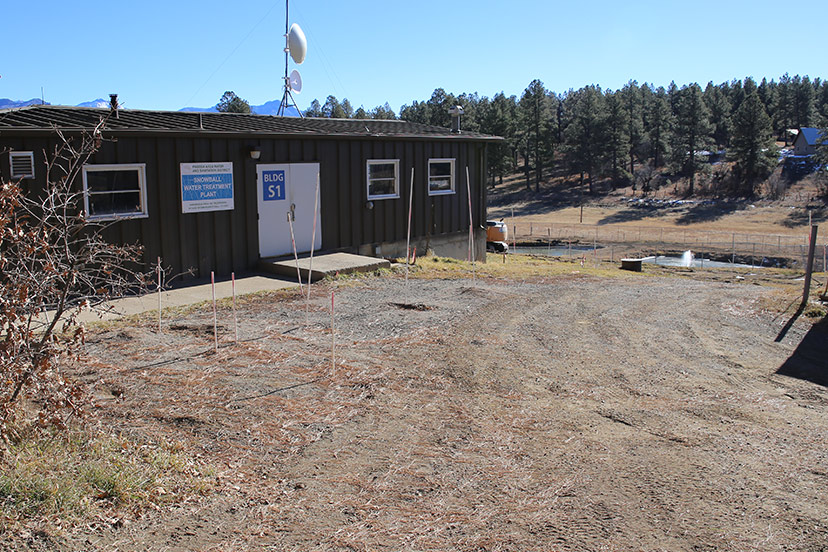6. Toss trash, don’t flush it! Put waste like tissues, dead insects and other items in the trash rather than flushing down the toilet. Every flush avoided saves about 1.5 gallons…
— from the Water22.org website, “22 Ways to Care for Colorado Water in 2022”
The photo at the top of the page was taken at Lake Mead, the largest water reservoir in the United States… when it’s full. Lake Mead currently about 26% [“twenty-six percent”] full. According to the Bureau of Reclamation — the federal agency responsible for keeping the reservoir operational — the water level at Lake Mead will continue to drop. The last time the reservoir was nearly full was
Last July, the prediction for Lake Mead’s water level for July 2024 was 1,014 feet above sea level. In September, the BOR predicted a level of 1,016 for July 2024. The prediction now, in November, is 1,015 feet. If the lake level falls to 950 feet, Hoover Dam will no longer be able to generate hydroelectricity. Currently, due to the low water levels, the electricity output is about 66% of historical levels.
At about 900 feet, the lake will no longer be able to release water downstream. It will be a ‘dead pool’.

We hate to think this situation is the result of flushing dead insects. And of course, it’s not.
But since we’re on the subject of flushing, we might want to consider the Snowball Water Treatment Plant… on Snowball Road, in Pagosa Springs.
Disclosure: I currently serve on the Pagosa Area Water and Sanitation District (PAWSD) Board of Directors, but this editorial series reflects only my personal opinions, and not necessarily the opinions of the PAWSD Board as a whole.
The Snowball Plant treats the drinking water for the downtown Pagosa Springs neighborhoods, and for pretty much all of the PAWSD district east of Piedra Road. The water arrives at the Snowball Plant via a 6-mile pipeline that begins near the confluence of the East and West Forks of the San Juan River, in Archuleta County’s northeast corner.
The plant runs on an older water treatment technology, and PAWSD has been discussing a new treatment facility, in the same location, for the past decade. A couple of issues with the existing plant:
1. The community has water rights, allowing us to divert up to 5 CFS (cubic feet per second) from the San Juan River to the Snowball Plant, but the facility can treat only about 2 CFS. A new plant would be able to treat more water, which would in turn allow (and possibly encourage) additional residential and commercial development east of Piedra Road, due to the increased water availability.
2. Due to its older technology, the Snowball facility uses about half of the water it treats for ‘backwashing’ — running the system backwards to remove the silt and other materials collected during the treatment process. For obvious reasons, the backwashing must be done with clean, treated water. In order to deliver 1,000 gallons of drinking water to customers, the plant needs to treat about 2,000 gallons… and 1,000 of those gallons — now tainted — goes into backwash holding ponds, and then into an irrigation ditch, to be used by nearby ranches.
A new plant would use much less water for backwashing — possibly as little as 5%, meaning that PAWSD would need to treat only about 1,050 gallons to deliver 1,000 gallons of clean water.

The issues with the new plant:
1. The cost is currently estimated at about $40 million. Even if PAWSD is able to acquire grants to help fund the project, all PAWSD customers are looking at increased water bills. All future development projects are looking at higher fees.
Part of the expense is due to pending regulations from the Colorado Department of Public Health and Environment (CDPHE), that are expected to classify ‘backwash’ water from water treatment plants as ‘hazardous waste’.
$40 million. If I’m not mistaken, this will be the most expensive infrastructure project, in terms of nominal dollars, ever undertaken by a local government in Archuleta County.
In 1931, the construction of the 726-foot-tall Hoover Dam cost an estimated $50 million. Obviously, prices have increased since 1931. Or the value of the dollar has decreased?
But how should we distribute the costs of this new treatment facility fairly, between existing customers and future development? Presumably, that will be a PAWSD Board discussion in the near future. It’s possible the higher fees will actually discourage new development.
As mentioned, the new $40 million plant (the exact price is not yet defined) will use much less ‘backwash’ water than the current facility, and will be able to meet new standards, in case CDPHE eventually decides to classify ‘backwash’ water as ‘hazardous waste’. Instead of sending half of its treated water to an agricultural ditch, the new $40 million plant will help ‘conserve’ millions of gallons of water every year.
But we also note that those millions of gallons of backwash water — the treatment of which are paid for by PAWSD customers — are currently flowing into an irrigation ditch, and are being used by local ranchers.
In other words, the PAWSD water is currently being ‘recycled’. But it is ‘consumed’ by the ranching operations. That is, it gets absorbed by grass, and used to feed cows.
Most likely, those ranchers have ‘pre-Compact’ water rights that guarantee legal access to large quantities of water every year. If the water doesn’t come from a PAWSD treatment facility, it can, most likely, be diverted from a different water source. And consumed.
Does Water22.org make any mention of who is actually consuming 89% [“eighty-nine percent”] of Colorado’s water?
